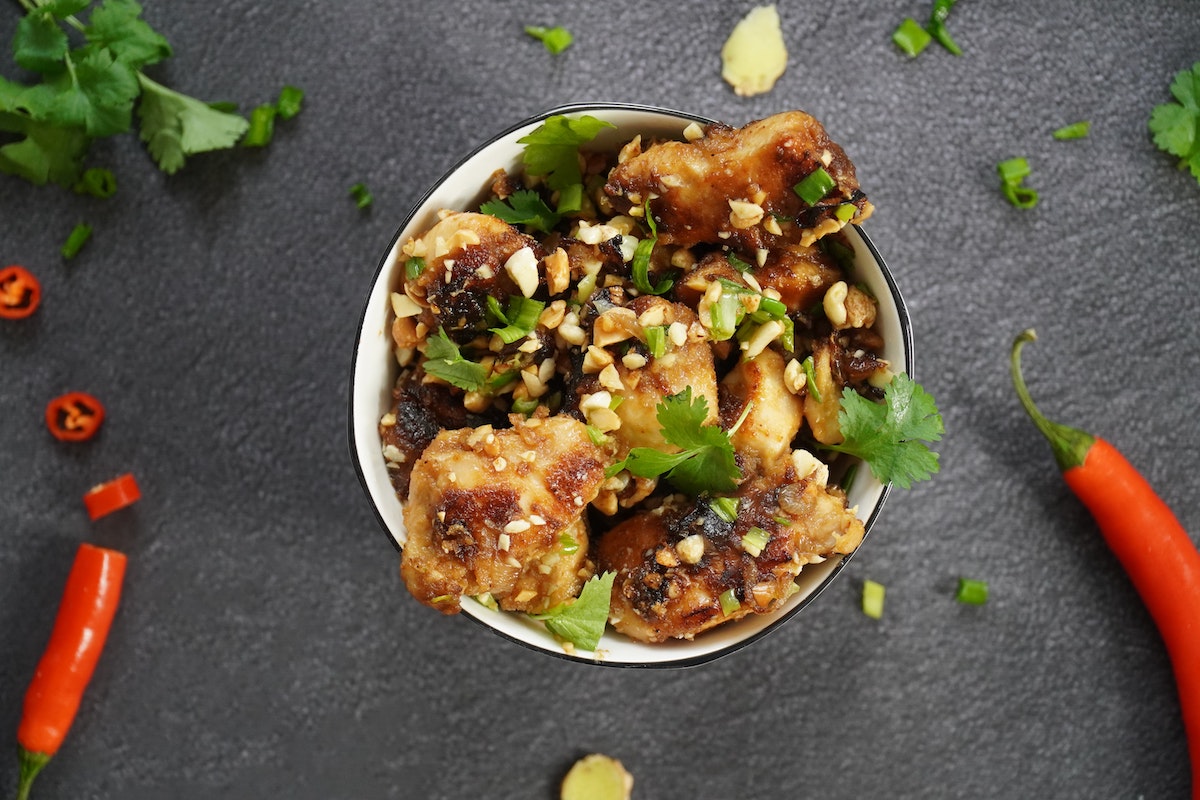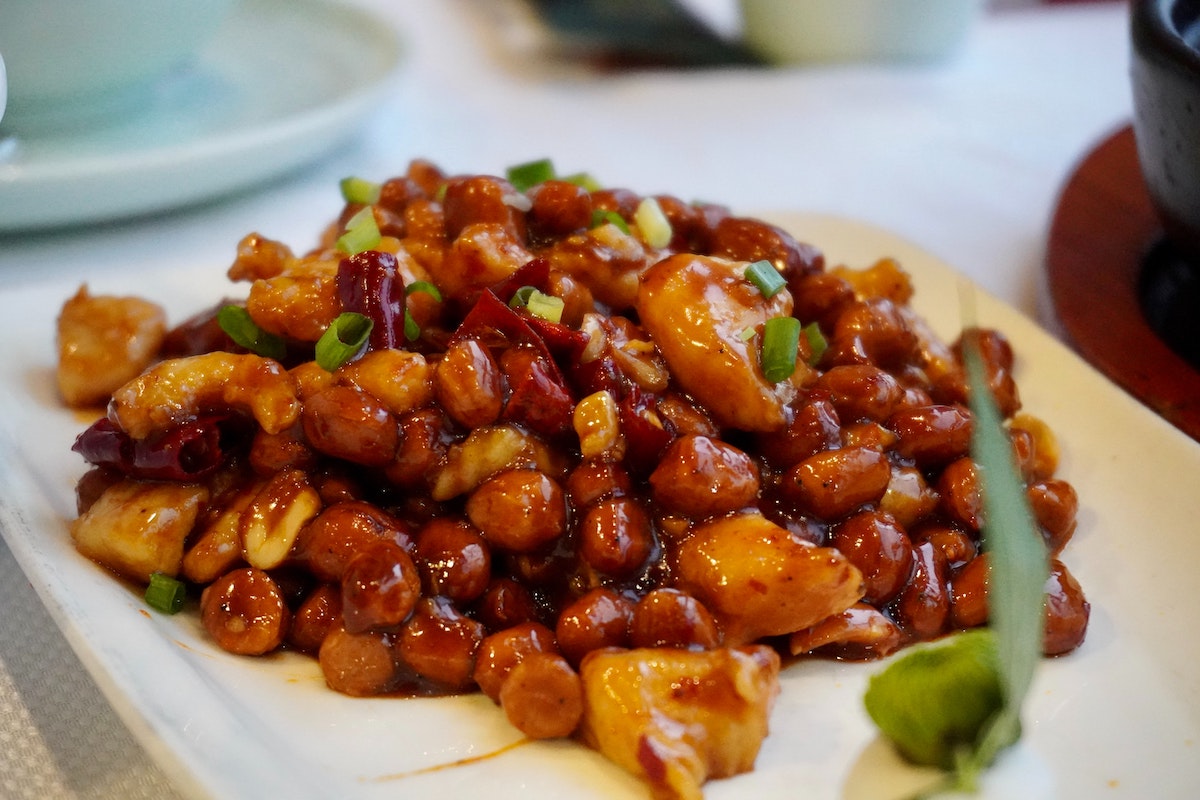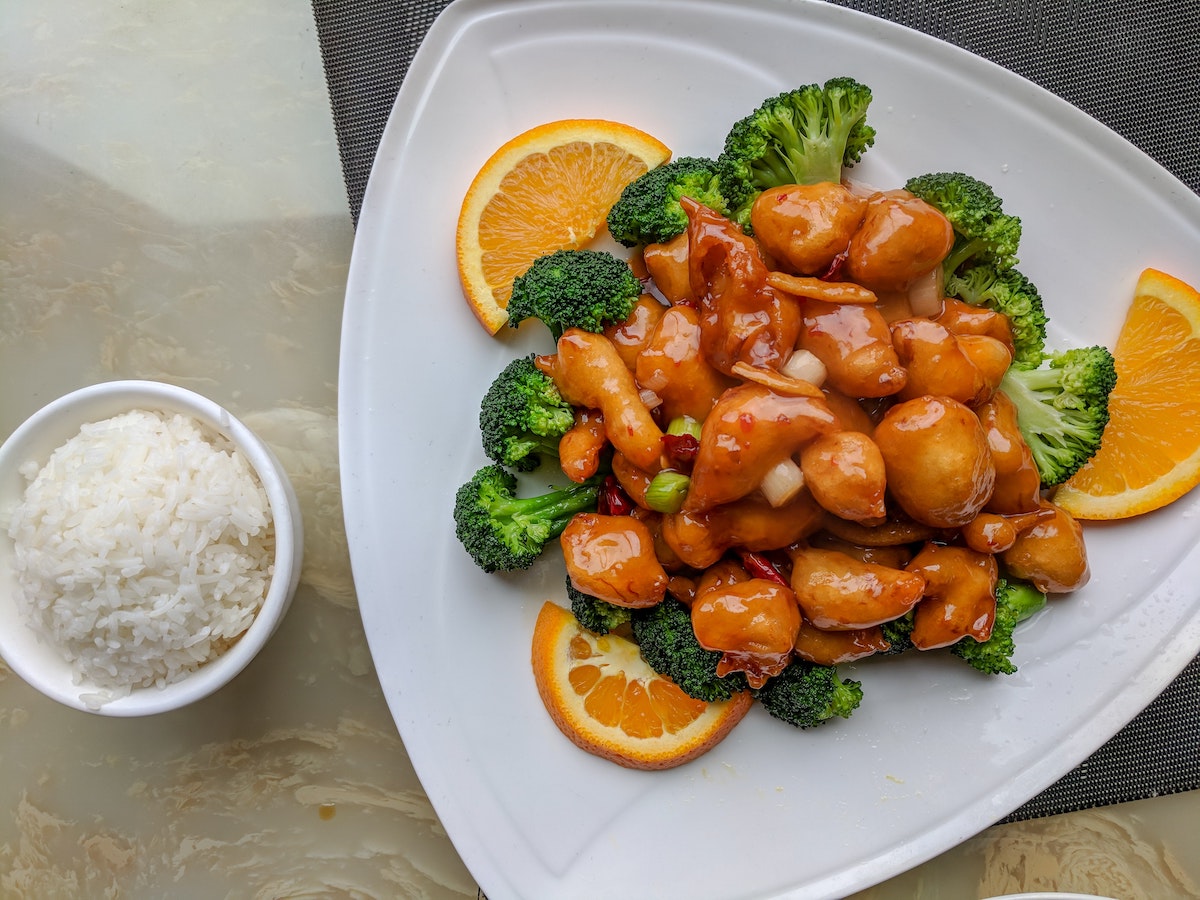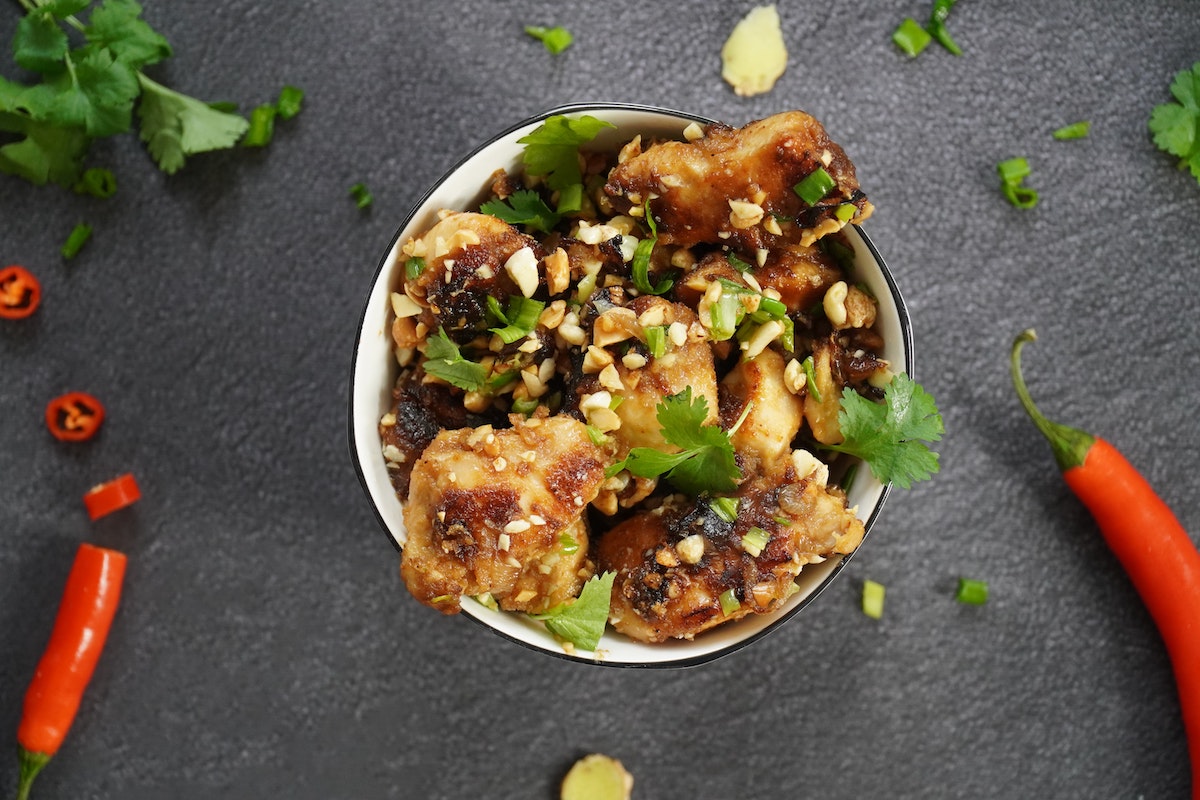
The Delicious History of Kung Pao Chicken (Plus a Recipe to Make Your Own!)
By: Nick Callos
Skip to Section
Article Summary
A spicy Sichuan favorite gets its name from a Qing Dynasty official with a taste for bold flavor and a story that still adds heat to the dish’s legacy.
Kung Pao chicken’s origin traces back to Ding Baozhen, a palace guardian whose name lives on through this iconic stir-fry. Whether it was a rescued-child-turned-official honoring a family recipe or a spice-loving statesman inventing the dish himself, the legend behind it adds a savory layer to every bite. This article walks through that origin story, breaks down the literal translation of the dish’s name, and lays out both traditional and vegetarian versions for cooking it at home.
- The dish name translates literally to “palace guardian diced chicken,” referencing an official title once held by Ding Baozhen.
- Multiple origin stories surround the dish, but all center on Ding’s love of spicy chicken with peanuts and chili.
- Traditional preparation involves quick stir-frying over high heat using marinated chicken, Sichuan peppercorns, dried chilies, and roasted peanuts.
- Vegetarian versions stick to the same method, swapping in tofu or cauliflower for the protein.
- Cooking requires full prep ahead of time, as the stir-fry process moves fast once the skillet’s hot.
Picture a stir-fried dish with peanuts, Sichuan peppercorn, and diced chicken.
Hungry already?
Those three ingredients form the nucleus of Kung Pao chicken—one of the most famous Sichuan dishes.
When it comes to things I couldn’t live without, Kung Pao chicken is one of them. Yes, it’s that darn good.
Like many great Chinese foods, Kung Pao chicken comes with a story. I previously wrote about the history of mapo tofu. You’ll find the history of Kung Pao chicken just as intriguing.
Sit back, relax, and enjoy the tale.
First, What Does Kung Pao Mean?

Photo by Allen Zhang on Unsplash
Any lesson on the history of Kung Pao chicken should begin with understanding the dish’s name in Chinese: gōngbǎo jīdīng.
Note! Kung Pao is the transliterated name for gōngbǎo.
So, what’s the actual meaning of Kung Pao?
Look it up in a Chinese-English dictionary, and you’ll see it means “spicy diced chicken.” But there’s more to it.
Let’s break down the characters (宫保鸡丁):
- 宫 (gōng) means palace
- 保 (bǎo) means to protect or safeguard
- 鸡 (jī) means chicken
- 丁(dīng) means cubed or diced
If we put 宫保 (gōngbǎo) together, we can translate that as “palace guardian.” So, a literal translation of the whole dish, Kung Pao chicken, is “palace guardian diced chicken.”
Now, you have an answer if someone asks you, “What does Kung Pao mean?”
That’s intriguing. But how did the dish get that name?
Let’s go back to the beginning…
The Story Behind Kung Pao Chicken

Photo by Drew Taylor on Unsplash
Though Chinese food scholars dispute how the dish came to be, all versions involve the same main character: Ding Baozhen—the man who gave us Kung Pao chicken.
During the Qing Dynasty in the mid- to late-1800s, Ding served as a government official in various provinces. He eventually became governor of Sichuan province and later held the title of Gōngbǎo (a position that involves protecting the prince). It was then that people called him Ding Gongbao—hence the name for the dish.
But who exactly made the dish? And how is Ding Baozhen involved?
You’ll discover different tales when researching the history of Kung Pao chicken. Essentially, two scenarios exist:
- When Ding Baozhen was a child, he fell into a river. He couldn’t swim, but a family passing by saved him. Later in life, after Ding became a government official, he paid the family a visit to offer his gratitude. While at the family’s home, they served him spicy diced chicken (aka Kung Pao chicken). Ding liked it so much that he popularized it in Sichuan. As the most ardent fan of Kung Pao chicken, the dish was named after him.
- Ding Baozhen loved to cook and especially liked chicken, peanuts, and spicy peppers. Using those ingredients, he created Kung Pao chicken. Originally a home dish of the Ding family, guests loved it so much that the popularity spread.
- An alternate version of the first story is that Ding had his chef cook up dishes according to his flavor preferences. When the chef stir-fried diced chicken, peanuts, and spicy peppers together and served it to Ding, he fell in love with the taste and requested it be made each time he had guests.
I personally like the first story better. It’s really cool that he went back to visit the family that saved his life!
Now that you know the history of Kung Pao chicken, let’s learn how to make it. Because even though experts don’t agree on the exact origins, one thing’s for sure: this dish brings the flavor and heat. You just have to sit down and eat it!
Kung Pao Chicken Recipes: Making the Classic Dishes

Photo by Karolina Kołodziejczak on Unsplash
As you read the history of Kung Pao chicken, you learned that this dish is stir-fried. So, you’ll be cooking at a very high temperature. Get ready for a tasty aroma to permeate through your home!
Stir-fry dishes also require you to have the ingredients ready to cook. Because one the skillet is going, you have to move quickly. Take the prep work seriously!
You’ll find many Kung Pao chicken recipes online. Here, we’ll go over a traditional Kung Pao chicken recipe and a Kung Pao vegetarian recipe.
Note: You should be able to find most ingredients for your Kung Pao chicken recipe at your local grocery store. You may have to go to an Asian food mart for Chinese cooking wine and Sichuan peppercorns (or you can order online).
Traditional Kung Pao Chicken Recipe
Get these ingredients:
- 1 pound of chicken breast (~454 grams)
- Clean and dice the chicken into 2-centimeter cubes.
- Chinese cooking wine
- Soy sauce
- Sesame oil
- Vegetable oil
- Salt
- Distilled white vinegar
- 4 green onion stalks, chopped
- 3-4 ounces of roasted peanuts (~100 grams)
- Make sure shells and skin are removed. If raw, soak in water for 10 minutes then peel before cooking.
- Dried Sichuan peppers (use 6-10 in the dish)
- 1 tablespoon of chopped garlic
- 1 thumb-sized piece of ginger
- Sichuan peppercorns (use about 15 in the dish)
- Buy Sichuan peppercorns here
- Make sure the peppercorns have the black seeds removed, as the seeds have a coarse texture.
- Brown sugar
- 2 tablespoons of cornstarch, dissolved in 2 tablespoons of water
Follow these steps to make Kung Pao chicken:
- Make the marinade. Mix ¼ tablespoon of salt, 2 tablespoons of Chinese cooking wine, and 2 tablespoons of cornstarch (dissolved in water previously). Toss the diced chicken into the marinade. Mix well and let the chicken marinate for 20 minutes.
- Make the sauce. Clean then chop the ginger, garlic, and green onions into small pieces. Mix the three with 1 tablespoon of sesame oil, 1 tablespoon of soy sauce, 2 tablespoons of white vinegar, and 2 teaspoons of brown sugar. Then stir!
- Prepare the skillet. Pour a little sesame or vegetable oil. Then, fry the peanuts (if they’re not already roasted). Once cooked, drain the peanuts and put them to the side to cool. Next, fry the 15 Sichuan peppercorns until they darken and you can smell the heat! Then, add 6-10 dry chili peppers and fry for 15 seconds.
- Add the chicken. Take the chicken and marinade and add it to the skillet. Turn the heat to medium-high and cook until the chicken is done. Then, add in the sauce, turn the heat up a little, and fry for another 1-2 minutes. To finish, add the peanuts.
- Serve and enjoy.
Kung Pao Vegetarian Recipe
Vegetarians can enjoy the Kung Pao flavor too. Most Kung Pao vegetarian recipes adhere to the traditional cooking process for the dish. You just have to choose a substitute for the chicken.
For Kung Pao vegetarian recipes, tofu or cauliflower commonly replace the chicken. Both tofu and cauliflower ensure the texture and flavor remain similar. To make the dish, follow the same steps as above, but instead of chicken, marinate tofu or cauliflower—and get ready for an explosion of flavor.
Kung Pao Chicken: A Gem of Sichuan Cuisine
Sichuan is home to some of the best spicy foods in the world, and Kung Pao chicken is one of the dishes you must make a point to have. Chances are you’ll keep coming back for more.
So, you’ve learned about the history of Kung Pao chicken and how to make the dish. You now have one task left: Eat!
About the Author
Nick Callos has always had a passion for reading, writing, and discovering the new and unknown. Originally from Cincinnati, Ohio, Nick holds a Bachelor’s Degree in English from Boston College. He currently splits his time between his hometown, Chengdu, China, and the open road. A full-time travel writer, Nick hopes his work can inspire others to explore the world more deeply and enjoy the digital nomad lifestyle.Featured image via Unsplash.
Information published on this website and across our networks can change over time. Stories and recommendations reflect the subjective opinions of our writers. You should consult multiple sources to ensure you have the most current, safe, and correct details for your own research and plans.
Frayed Passport is a participant in the Amazon Associates Program, an affiliate advertising program designed to provide a means for sites to earn advertising fees by advertising and linking to Amazon.com. We also may share links to other affiliates and sponsors in articles across our website.




